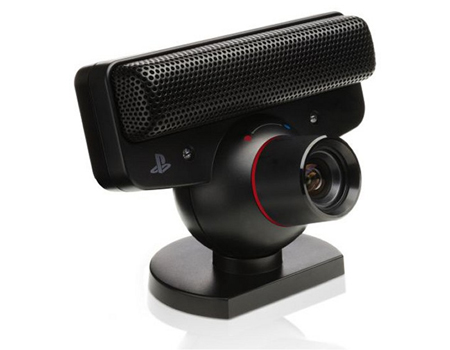Sony PlayStation Motion Controller
In-the-know readers will be aware that Sony’s PlayStation 3 console launched with a motion-sensing controller back in 2006. The peripheral, dubbed the SixAxis Wireless Controller, is essentially a DualShock joypad equipped with sensors that allow it to track movement along the three posture axis of roll, pitch and yaw, as well as three-dimension acceleration information along the X, Y and Z axes.
The SixAxis was deemed by many in the media to be a last-minute attempt to scupper Nintendo’s Wii Remote. It has so far failed to gather widespread interest from game developers and its use for motion detection has become something of a rarity. The SixAxis was later succeeded by the DualShock 3, a similar joypad with added rumble functionality.
Trying its hand at the motion-sensing game once again, Sony will next year launch its second attempt in the form of a PlayStation Motion Controller, pictured below.

Not a whole lot is known about the device, and it doesn’t yet have a finalised name. Sony, however, has publically stated that the controller will be available in spring 2010. As of now, we’ve only seen it demonstrated in prototype form. So, what do we know so far?
The PlayStation Motion Controller prototype is a handheld device similar in size to the Wii Remote and it’s quickly becoming known as “the wand” due its illuminated orb.
As it turns out, that orb is key to the controller’s functionality. It’s equipped with LEDs that are able to shine in a variety of colours, and it’s those spherical colours that are tracked by the controller’s accompanying component – the PlayStation Eye.

Unlike the Wii Remote – which, remember, uses a infrared light-emitting sensor-bar to track position – the PlayStation Motion Controller will be detected by the PlayStation Eye webcam. Due to the spherical shape of the controller’s top, the webcam is able to determine its position and distance by tracking the size of the sphere in relation to itself.
With the orb allowing for the ‘wand’ to be tracked in three dimensions, Sony’s controller then uses additional WiiMote-like technology to sense motion. Although Sony is yet to detail the finer workings of the controller, early indications suggest that the device is equipped with accelerometers and multi-axis gyroscopes that offer motion-tracking functions similar to the Wii MotionPlus.
At the prototype stage, Sony’s PlayStation Motion Controller appears to be more evolutionary than revolutionary, but the promise of ‘high-precision, sub-millimeter’ accuracy should be far more appealing to developers than the lacklustre SixAxis.
That leaves Microsoft, so let’s see what it has to offer.









